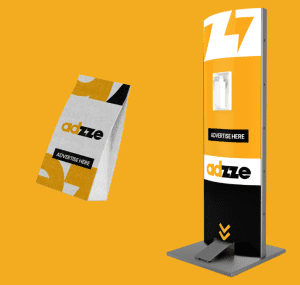The advertising industry is constantly evolving, and marketers are under relentless pressure to devise innovative advertisement ideas that capture attention and drive results. In a saturated market with ever-shifting consumer demands, maintaining relevance requires creativity, adaptability, and a deep understanding of audience dynamics. Let’s explore the major challenges marketers face and strategies to overcome them.
Understanding the Target Audience
A comprehensive understanding of the target audience is the foundation of any successful advertising campaign. Without it, efforts are likely to fall flat. The difficulty lies in acquiring accurate and actionable insights:
Diverse Consumer Preferences: Consumers are more segmented than ever, with varied preferences influenced by culture, geography, and lifestyle.
Evolving Trends: Trends emerge and fade rapidly, making it difficult to keep up.
Data Accessibility: Smaller advertisers often struggle to access or afford the tools needed to gather meaningful data.
The cornerstone of any successful advertising campaign lies in a deep understanding of the target audience. Without this knowledge, even the most creative ad might miss its mark. Today’s consumers demand personalized and relevant content, making it essential for marketers to invest in audience research. This process involves:
Data Collection: Leveraging tools like Google Analytics, social media insights, and surveys to gather demographic, behavioral, and psychographic data.
Segmentation: Dividing the audience into smaller groups based on shared characteristics, such as age, interests, or buying behavior.
Creating Buyer Personas: Developing fictional representations of ideal customers to guide messaging and strategy.
To counter these challenges, leveraging analytics platforms, conducting surveys, and using social listening tools can provide a clearer picture of consumer behavior and preferences.
The Creative Imperative
Creativity is paramount in capturing attention. However, producing innovative advertising ideas that resonate with audiences is easier said than done. Common hurdles include:
Oversaturation: Consumers are exposed to thousands of ads daily, making it challenging to stand out.
Resource Constraints: Not all brands have the resources to experiment with bold, unconventional ideas.
Balancing Creativity with Strategy: Ensuring that creative ideas align with brand messaging and objectives is crucial.
Challenges in Guerrilla Marketing
Guerrilla marketing thrives on unconventional methods that surprise and engage consumers. While this approach offers unique advantages, it comes with specific challenges:
Unpredictability: The lack of precedent for unconventional methods often makes outcomes uncertain.
Limited Coverage: Guerrilla campaigns are typically hyper-localized, which can restrict reach.
Execution Risks: Implementing novel strategies may lead to unforeseen logistical or reputational issues.
Creativity is the lifeblood of advertising. However, generating unique ideas is challenging, particularly in a competitive landscape. Creative block, limited resources, or restrictive client briefs can stifle innovation. To combat this:
Brainstorming Sessions: Foster collaborative environments where diverse perspectives can spark ideas.
Inspiration from Trends: Keep an eye on cultural shifts, emerging memes, or viral content for inspiration.
Use of AI Tools: Platforms like ChatGPT or Jasper can assist in generating creative ad copy or concepts.

The Role of Guerilla Marketing
Guerilla marketing has emerged as a powerful tool for brands seeking to make an impact without massive budgets. It thrives on creativity, surprise, and unconventional approaches. However, guerilla marketers face unique challenges:
Unpredictable Outcomes: As these techniques often lack precedent, their success is uncertain.
Coverage Limitations: Most guerilla campaigns are hyper-local, restricting reach.
Regulatory Hurdles: Some unconventional tactics may face legal or ethical scrutiny.
To mitigate these challenges, marketers can:
Conduct pilot tests to gauge effectiveness.
Partner with local authorities or stakeholders for support.
Use digital amplification to extend the campaign’s reach.
Examples of Innovative Guerilla Marketing
Unconventional tactics often rely on creativity to stand out. Here are examples of successful campaigns:
Bar Coasters: A beer snack manufacturer used branded coasters in NYC bars to promote new products, directly targeting their audience.
Pharmacy Bags: Pharmaceutical companies used prescription bags as a medium to inform patients about new medications, leveraging proximity to hospitals.
Coffee Cup Ads: A museum advertised discounts on coffee cups, appealing to millennials and driving traffic to exhibits.
Hotel Key Cards: Luxury products found a perfect fit on hotel room key cards, directly targeting high-end consumers.
Pizza Box: A fitness center used pizza boxes to distribute promo codes, playing on the irony of indulging in calories while promoting fitness.
By leveraging innovative advertising ideas with in-hand advertising mediums, brands create memorable touchpoints that resonate deeply with their audience.








